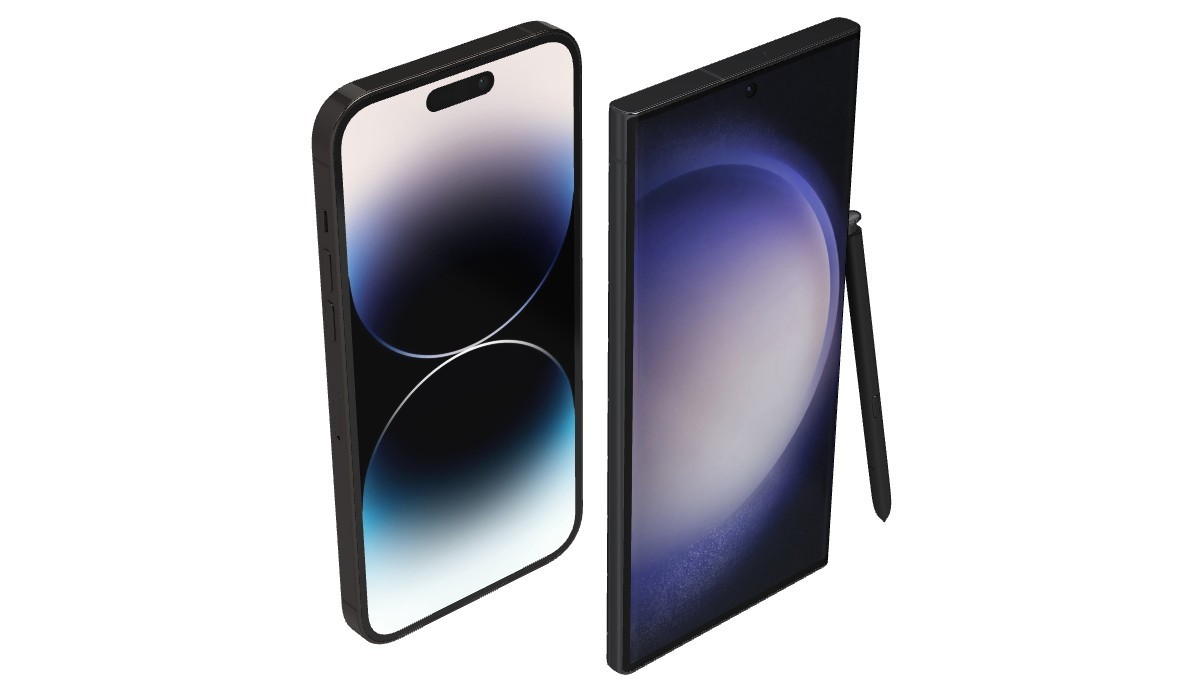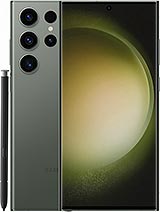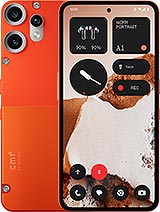Apple iPhone 14 Pro Max vs. Samsung Galaxy S23 Ultra

This article is part of a new series where we'll try to give you a quick overview of how some of the most popular smartphones compare head-to-head based on our review findings. Long-time readers won't find new tests here, but nevertheless, it's an original piece of content that would hopefully bring value to those looking for their next smartphone. We'd appreciate your feedback in the comments on whether you find articles like these useful.
Table of Contents:
If you are looking for a big, high-end smartphone in 2023, arguably the most popular dilemma would be between the iPhone 14 Pro Max vs. the Samsung Galaxy S23 Ultra. Two big-screen smartphones with lots to offer, but also asking a lot with price tags to match.
You can compare the full specs sheets or check our editor's assessment further below.
No matter which one you choose, you will get the latest and greatest each company has to offer. So let's pit them against each other to see if we'll find ourselves a winner.
Size comparison
The numbers speak for themselves - the Galaxy S23 Ultra is the bigger phone of the two. The difference is within a few millimeters, though, while giving you a little bit of extra screen real estate due to the higher screen-to-body ratio and bigger display in absolute terms.
You can size compare the two phones in 3D view using the link below.

Admittedly, both handsets are quite unwieldy. They are hefty and big enough to make one-handed operations a challenge.
But they feel quite different in hand. The blocky iPhone design and the sharp steel edges make up for a more secure grip, albeit not the most comfortable one. On the other hand, the S23 Ultra feels a tad more slippery but more comfortable in hand thanks to its rounded edges.
Display comparison
When it comes to the display hardware, Samsung's phone offers higher resolution, a larger diagonal and is curved to the sides, allowing for a more comfortable grip and gesture execution.
The Pro Max boasts considerably higher brightness in both modes - manual and auto. It also tops the S23 Ultra's HDR video standard with Dolby Vision, whereas the Galaxy "settles" for HDR10+.
Color accuracy of both screens is superb as long as you choose the right color mode.
The vast majority of users will get a similar visual experience on either phone. Yes, the iPhone may look a bit better under direct sunlight as it can go up to 1,760 nits, but the S23 Ultra's 1,274 nits are quite respectable too. Also, these numbers don't mean the iPhone will be some 40% brighter; that's not how nits work. What's important is that in both cases, you get a sufficiently bright display providing an excellent outdoor viewing experience.
Battery life
Even though the iPhone 14 Pro Max has a considerably smaller battery pack, the phone demonstrates exceptional endurance. Apple achieves this through numerous hardware and software optimizations, squeezing impressive screen-on runtimes out of the rather small 4,323 mAh battery.
Alternatively, the Galaxy S23 Ultra posts a slightly better overall score due to its longer standby and phone call runtimes. That's mostly due to the bigger 5,000 mAh cell. Still, it's a step behind the 14 Pro Max when it comes to video playback and browsing runtimes.
Charging speed
To be frank, neither of the two phones is particularly fast when it comes to charging, especially when you consider the vast majority of Android phones that came out in the last two years or so. The Galaxy S23 Ultra can go up to 45W on Power Delivery if you pair it with the appropriate charger, while the 14 Pro Max caps at 27W (unofficial number), but your mileage will vary based on the charger you use.
The Galaxy S23 Ultra comes out on top with a big lead over its rival, reaching a full charge in just under an hour, while the 14 Pro Max tops off its cell in a little less than two hours. The 30-minute charge test puts them a bit closer together, with the S23 Ultra getting 68% of the juice back while the Pro Max restored only 48% of its charge back.
Speaker test
Both devices sport a pair of stereo loudspeakers each, and they are pretty close when it comes to overall quality and loudness. You will hardly find any significant difference as the two handsets offer a great listening experience - and honestly, these are among the best speakers you can get on a phone.
Still, we find the Galaxy S23 Ultra a bit better-sounding. Vocals are clearer and tracks sound a tad flatter, catering to people who are more critical of sound setups. The iPhone 14 Pro Max, on the other hand, provides a bit extra bass but muffles the vocals and makes everything sound deeper. Unnecessary at times, even.
Performance
The two smartphones run on entirely different chipsets, even if they are both built using a similarly power-efficient 4nm manufacturing node. The Galaxy S23 Ultra has the Snapdragon 8 Gen 2 tailored for Galaxy smartphones, while the 14 Pro Max uses Apple's custom A16 Bionic chip.
The Snapdragon 8 Gen 2 has an unusual 1+2+2+3 CPU configuration (1x3.36 GHz Cortex-X3 & 2x2.8 GHz Cortex-A715 & 2x2.8 GHz Cortex-A710 & 3x2.0 GHz Cortex-A510) with an Adreno 740 GPU taking care of the GPU-intensive tasks.
The A16 Bionic chipset has a more conventional 2+4 CPU configuration that consists of 2x3.46 GHz Everest + 4x2.02 GHz Sawtooth cores. A custom Apple GPU with 5 cores is used for graphics rendering.
The new Snapdragon 8 Gen 2 shows superior GPU performance and also takes the lead in combined scenarios like AnTuTu 9. However, pure CPU-bound tests show the Bionic A16's superiority, despite its hexa-core configuration. It's measurably faster in single and multi-core workloads.
At the end of the day, though, the two devices are good enough to run smoothly pretty much everything you find on their respective app stores. It's going to be pretty hard to determine which one is better in standard daily usage. Our best guess is that you won't feel the difference.
There's also the software optimization argument. Some users may find iOS more optimized and fluent than Samsung's Android-based One UI, and we tend to agree - especially a year or two down the line when the storage starts to fill. But ultimately, not many will notice the difference. It mostly boils down to personal software preference.
Both manufacturers promise a similar number of major future software updates and have a pretty good track record of sticking to their promises in that respect.
Camera comparison
The camera comparison is multi-faceted, so it's a bit tricky depending on your preferences. Both phones make great shots and record really nice videos. Sharpness, detail, dynamic range, contrast, noise - all that seems to be in check, which is what you'd expect from a modern flagship phone. But Samsung and Apple have different takes on photography.




Samsung Galaxy S23 Ultra camera samples: 0.6x • 1x • 3x • 10x
More samples and a detailed analysis can be found in our Galaxy S23 Ultra review.
Let's say that Samsung's processing style will likely appeal to the majority due to its vibrant aesthetics. Colors are punchier, and HDR is a bit more aggressive, lifting up even the darkest of shadows. Samsung's pictures are definitely more social-media friendly.




Apple iPhone 14 Pro Max camera samples: 0.6x • 1x • 2x • 3x
More samples and a detailed analysis can be found in our iPhone 14 Pro Max review.
The same goes for the low-light photos, which, in Samsung's case, look like they have been rendered on a computer due to the artificially added sharpness during processing. Don't get us wrong, that's not bad by any means, but some may find it less appealing. In this case, the iPhone 14 Pro Max is the more "natural" choice, literally and figuratively speaking.
Apple is a bit more conservative in this regard. Still, one could make a case that Samsung can do both. The Expert RAW app is tailored towards people who like to do post-processing on their own and take full advantage of the S23 Ultra's camera hardware.
Here's a glimpse of how the iPhone 14 Pro Max's main camera compares in image quality to the Galaxy S23 Ultra's in our Image compare tool.
And here's how the iPhone 14 Pro Max's main camera compares in video quality to the Galaxy S23 Ultra's in our Video compare tool.
The intricacies of image quality aside, the Galaxy S23 Ultra is objectively the more versatile cameraphone. While the 14 Pro Max has three cameras - a standard one, an ultrawide, and a 3x zoom telephoto, the S23 Ultra tops that with a 10x periscope camera, so you get one extra focal length.
Video recording is where the iPhone 14 Pro Max shines. Overall, video quality is better though the Galaxy S23 gives it a good run for its money when it comes to stabilization.
Verdict
As it's usually the case with Android vs. iOS phones, it all boils down to personal preference. The two phones are neck and neck in most aspects, with the S23 Ultra standing out with an S Pen, one extra zoom camera, and faster charging, while the iPhone relies on an advanced Face ID for unlocking (preferred by some), a mature software ecosystem that's compatible with dozens of other devices and arguably the best video recording capabilities on a smartphone right now.
If you are either a user wanting to switch to Android, the S23 Ultra should definitely be on top of your list and vice versa - if you'd like to try out iOS, there's no better way to experience it on the 14 Pro Max's big screen. Both companies have come a long way, and personal preference will be the deciding factor, especially seeing how price tags are pretty close to each other.
- Enjoying the best iPhone yet.
- The better CPU performance.
- The promise of at least 5 years of iOS updates (as opposed to 4 on the Galaxy).
Get the iPhone 14 Pro Max for:
- The slightly larger and sharper screen.
- The pressure-sensitive S Pen functionality.
- The faster charging.
- The better camera image quality and for having two zoom cameras.
- The double base storage at the same price.
- The more customizable Android OS (as opposed to the "walled garden" of iOS).
Get the Galaxy S23 Ultra for:
Related
Reader comments
- Anonymous
- 05 Jun 2024
- Rti
I wish it did, that's what I don't like about iPhone
- Anonymous
- 06 Dec 2023
- FJj
Why hasn’t iPhone come out with the ability to pause a video when recording?










 Xiaomi
Xiaomi Samsung
Samsung Nothing
Nothing Samsung
Samsung OnePlus
OnePlus


